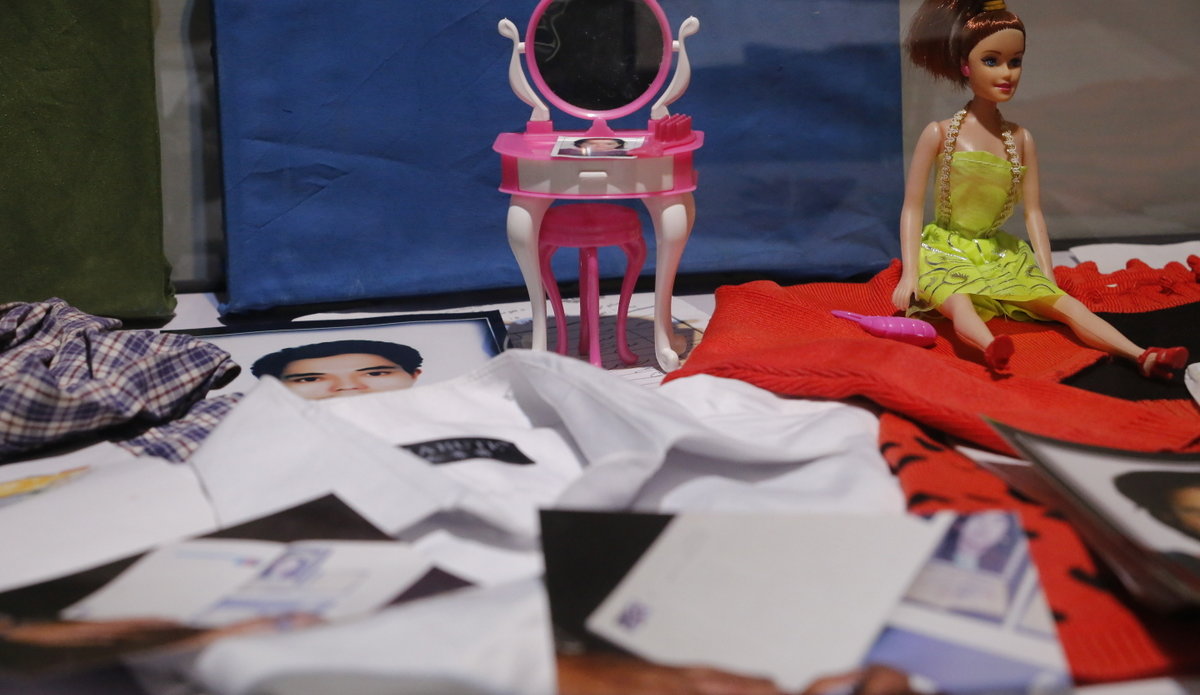Moving Exhibition Opens in Kabul - Places victims centre stage of peace efforts
KABUL- Surrounded by a lovingly-arranged collection of fading cherished personal items --a wrist watch, a compact disc, some drawings, a pen and note paper-- a framed photo of Abdul Latif stares out from behind one of many vitrines lined up along the exhibition wall. It is just one of many moving and compelling “memory boxes” assembled in Kabul as part of a memorial project aimed at protecting and sharing the stories of some of the thousands-upon-thousands of victims from Afghanistan’s 40-year long conflict.
Abdul fell in a battle in the eastern province of Khost when he was just 22 during September 1992. Makhdoma, his sister, tells the story of her brother, a young engineer whose absence still haunts her family that was to suffer further hardship in the wave after wave of conflict --a distressing narrative shared by so many Afghan families.
Eight-years in the making, the memorial exhibition centres around the “memory boxes” that survivors --family members and friends of victims-- have built and filled with carefully chosen personal objects and stories of their loved ones.
Poignant, and at times harrowing, the memory boxes --mostly large glass cases resembling display cabinets -- are the work of hundreds of survivors and bring together more than 4,000 personal objects and stories.
The memory box exhibition was conceived and led by the Afghanistan Human Rights and Democracy Organization (AHRDO), a non-governmental organization that employs arts and theatre-based programmes to create spaces for dialogue, peacebuilding, social justice and public participation.
“While all Afghans feel a profound sense of victimhood and suffering as a consequence of these protracted wars, there has been little official effort to put in place a policy of remembrance of the millions of Afghan victims and of the lives shattered by the various cycles of armed conflict,” said Hadi Marifat, AHRDO Executive Director. “The absence of a policy of remembrance of war victims deprives Afghans and Afghanistan of a significant opportunity to look back at their history and question the continuing conflict and victimization of the civilian population in a situation of armed conflict.”
The Afghans remembered in the memory boxes come from diverse professions and backgrounds, as well as being from many different locations across the country. They lost their lives at many different moments in the four decades of conflict.
A young woman, Mehnaz, recalls Bibi Zulaikha, her mother-in-law, killed in her Kabul home in 1997 by shelling between the Taliban and Mujahedeen. More recent still is the commemoration of the effects of a blast on Darulaman Road in the capital on 21 April 2015 that claimed the lives of 17-year-old Mohammad Sadiq and his young niece Saima, whom he had just collected from school. They are remembered together in a single memory box created by M. Musa, who lost a son and a granddaughter. The memory box contains heart-breaking souvenirs and mementos that include a doll and doll’s house furniture.
The Afghanistan Centre for Memory and Dialogue opened as a permanent exhibition on 14 February 2019 and is currently hosted in the basement of the AHRDO offices, in downtown Kabul. The organizers are currently seeking to display the memorial in public premises, more accessible to interested citizens.
This month’s inauguration ceremony of the centre comes at a timely moment, in the context of intense discussions around the prospect for full peace talks to bring 40 years of conflict to end. The Chairperson of the Afghan Independent Human Rights Commission, Dr. Sima Samar, local civil society representatives, as well as victims and survivors participated in a panel discussion following the inauguration of the memorial.
UNAMA’s Chief of Human Rights, Richard Bennett, participated in the ceremony highlighting the importance of memory, justice and dialogue for reconciliation and sustainable peace. He stressed the need to put victims at the centre of any peace effort.
“As the former UN Secretary-General Kofi Annan said in 2004, ‘justice, peace and democracy are not mutually exclusive objectives, but rather mutually reinforcing imperatives.’”
“These imperatives should make a priority of building sustainable peace and stability while dealing with past abuses, reconcile victims, perpetrators and other stakeholders,” Bennett said.
“History shows that this is the only way to move from a divided past into a shared future. UNAMA has been and will be ready to engage with you and other partners in promoting a culture of accountability based on the recognition of the plight of victims and honouring the victims’ right to benefit from remedies and reparation, and to know the truth, as international law duly prescribes.”
__________________
For more about AHRDO and the ‘memory boxes’ visit the centre.
View https://www.facebook.com/AHRDO.Org/ and https://www.youtube.com/watch?v=NEUee4HoK_s&t=50s
Contact info@ahrdo.org or call: 0747231763 / 0799848678.
 UN
UN







